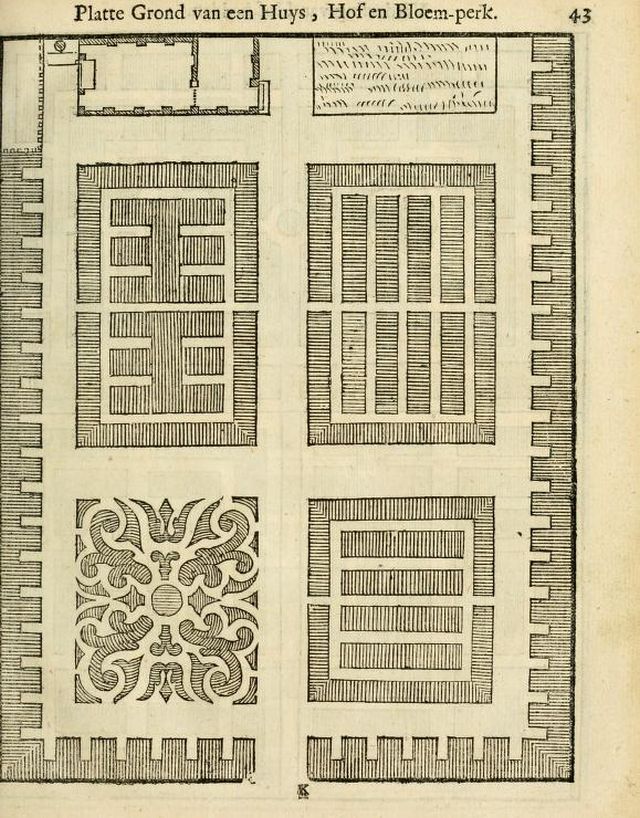
Courtesy Internet Archive University of California Libraries, public domain
Hi-res image: https://archive.org/details/dennederlandtsen00groe/page/n5/mode/2up
This print, providing a sample model for a modest garden layout, is shown in what was the most popular gardening book of the day: Jan van der Groen, Den Nederlandtsen Hovenier, first published in Amsterdam in 1669. The garden’s layout is typical for mid- 17th-century urban gardens in the Netherlands and was also used for the layouts of garden plots in New Netherland. The garden is divided into a series of neatly arranged square planting beds. Every inch counts, requiring the careful selection and organization of the different types of plants, from crops for food and herbs for healing, to flowers for ornament–kept in a separate decorative planting section.
According to Adriaen van der Donck’s Description of New Netherland there were many gardens in New Amsterdam. In addition to the West India Company’s main garden situated along Broadway, there are various medical botanical gardens: “No reasonable person will doubt that there are not many medicinal and healing plants in the New-Netherlands. A certain chirurgeon [surgeon] who was also a botanist, had a beautiful garden there, wherein a great variety of medicinal wild plants were collected… .”
Van der Donck may well refer to an apothecary garden like the one that was laid out behind the Kierstede residence on Pearl Street in New Amsterdam. Its design followed the typical urban garden layout of a simple quartered plot, but its contents were different: here the Kierstedes focused on the cultivation of medicinal plants and herbs that were important for the family’s Apothecary.
Location and Date of publication: Amsterdam: G. de Groot, 1669.

